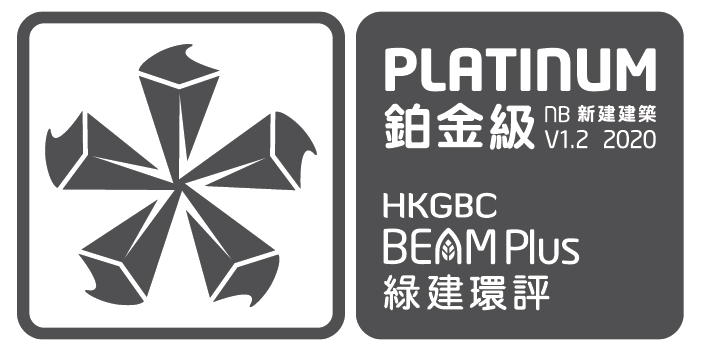


| Completion Year | 2017 |
| Number of Blocks | 2 (Tower A and Tower B) |
| Number of Storeys | Tower A: 10 floors with two basements (Exclude roof floors) Tower B: 10 floors with one basement (exclude roof floors) |
| Type | Government, Institutional and Community |
| Project Manager | Architectural Services Department, HKSAR Government |
| Architect | Simon Kwan & Associates Limited |
| Landscape Architect | ACLA Limited |
| M&E Engineer | J.Roger Preston Limited |
| C&S Engineer | Meinhardt (Civil & Structural) Limited |
| Facade Consultant | Meinhardt Façade Limited |
| Main Contractor | China State – Shui On Joint Venture |
| Quantity Surveyor | Rider Levett Bucknall Limited |
| Sustainable Design Consultant | Cundall Hong Kong Limited |
| Acoustic Consultant | Shen Milsom & Wilke Limited |
The Hong Kong Children’s Hospital (HKCH) is the tertiary referral centre for complex, serious and uncommon paediatric cases requiring multidisciplinary care. It provides diagnosis, treatment and rehabilitation services for patients with relevant clinical needs from birth to 18 years of age territory-wide.
HKCH consists of two towers, namely the Training & Research Tower (Tower A) and the Clinical Tower (Tower B), which are connected by three link bridges. The construction has extensively integrated sustainable design concepts, environmentally-friendly and energy-efficient installations, as well as abundant green features.
What are the motivations to go “green”?
What are the major strategies to earn the credits and achieve the BEAM Plus rating?
“Integrated Design” is the key of the success of this project. The project has taken the following strategies during different stages to date:
a) Clear Project Aspiration in Early Stage
The project team had a clear vision to achieve excellency in vary aspect in early stage. Naturally this is also the project team aspiration to go beyond the brief to attempt the highest BEAM Plus rating target. With this target in mind, the project team has tried their very best to plan and deliver this target.
b) Early Planning
Sustainability is most cost effective if it is well planned in early stage. Therefore the BEAM and sustainability consultant in the project team had aimed at influencing / guiding the design decision as much as possible in early stage.
Significant effort was made to study the design options and cost impact of each credit. Each consultant was then given clear BEAM design briefing in early stage to integrate the associated sustainable elements into the design.
Early planning and design briefing is not easy, as quite often the project team only had limited information and time in early stage. Advices were offered based on based on experiences and speedy preliminary analysis, the project team then review the proposed information and incorporate in later stages where required.
c) Integrated Design - Discover & Develop
Integrated Design is about discovering and developing design solution in a collaborative approach. Sustainable design is not about how the sustainability consultant thinks the building should be, but being proactively engage each project discipline to coordinate and develop a collaborative sustainable design and synergy to maximise the project potential.
Each professional discipline has their own view and understanding about suitability, and sometimes their expertise is beyond what BEAM Plus had addressed. The sustainability consultant had therefore engaged the project team through design workshops to discover what can practically done, and to develop practical solutions by drawing the expertise of each designer, rather than just requesting the project team to follow the requirements stipulated in the BEAM manual. The input from all disciplines were integrated, together as a whole to achieve the overall target. From architects, landscape architect, building services engineer, structural engineer, lighting designer to even interior and way-finding designer, they were engaged in this Integrated Design process.
Since this is a Design and Construction project, the project team had more direct access to construction team and suppliers for faster feedback.
d) Strong Procurement Management
Due to D&C nature, the sustainability consultant works hand-in-hand with the contractor and project team in materials selection process.
The project team has developed a thorough sustainable material briefing and review process for relevant items, from architectural materials to structural and building services items. The process is to ensure the required green materials will be thoroughly checked before purchase and installation.
What are the main obstacles during the certification process? And how would you tackle them?
A right balance between sustainability and client requirements must be achieved. As this is a healthcare project, it is even more challenging in striking a fine balance on quality, performance, sustainability without compromising any of the hygiene and infectious control requirements in meeting the BEAM requirements and to score additional credits. Design solutions are not always straight forward but rather have to carefully go through the sustainability target, client requirements, and investigate what is feasible and practical. It is crucial that the project team has gone into great length and effort to coordinate with all stakeholders in meeting each and every need as specified in the brief and end users requirement without compromising on any front.
Unlike typical offices or other commercial development, this is a highly sophisticated large scale hospital project, including research facilities, has approximately GFA of 117,000m² , with more than 3,000 rooms, there is practically no “typical floor” in this development as every floor and room has been designed for a specific purpose. Given this project size, efficient and effective coordination amongst the large design team, construction team and many specialist consultants is proven a challenge for all to surmount. Sharing the same vision and goal, the swift exchange of design and advice amongst all help to bring the project forward in well-coordinated manner.
Apart from the BEAM Plus rating, what do you consider the key project success? What are the expectation for the future users of the building?
Apart from sustainability, patient’s well-being is the centre of design philosophy of a healthcare building, which the current BEAM Plus rating tool is not covering all the essential aspects but worth mentioning.
The project team has conducted many researches to investigate how best to improve built environment to facilitate patient’s recovery and hospital staying experience. One of the key conclusions is that bringing patients in contacts with outdoor/semi-outdoor natural environment can help patient’s recovery. Therefore the architectural design has been designed to maximise contact to the natural world.
For example, the project has incorporated approximately 40% of landscape in the site for patient’s enjoyment. The landscaped area not only enhances patient’s staying experience, but also improve environmental quality, reduce heat island effect and provide a good visual amenity to the neighbourhood.
The towers have also been designed in H-shape for maximum view and daylight. All wards are located at building perimeter for better access to daylight and view. Be able to see the natural daylight cycle and outdoor view, it helps patients to restore the circadian rhythm and hence, better sleep at night. Feature shading device on the façades helps to reduce unwanted glare and heat gain for better thermal comfort and energy reduction.
This is also the first hospital designed to achieve BEAM lighting pollution standard, first of this kind in Hong Kong. While the exterior lighting can provide adequate illumination to highlight the building but at the same time, the subdued design lighting level has been optimised to eliminate sky glow, limiting lighting pollution to the vicinity, yet, without compromising the building design as a whole.
| Completion Year | 2017 |
| Number of Blocks | 2 (Tower A and Tower B) |
| Number of Storeys | Tower A: 10 floors with two basements (Exclude roof floors) Tower B: 10 floors with one basement (exclude roof floors) |
| Type | Government, Institutional and Community |
| Project Manager | Architectural Services Department, HKSAR Government |
| Architect | Simon Kwan & Associates Limited |
| Landscape Architect | ACLA Limited |
| M&E Engineer | J.Roger Preston Limited |
| C&S Engineer | Meinhardt (Civil & Structural) Limited |
| Facade Consultant | Meinhardt Façade Limited |
| Main Contractor | China State – Shui On Joint Venture |
| Quantity Surveyor | Rider Levett Bucknall Limited |
| Sustainable Design Consultant | Cundall Hong Kong Limited |
| Acoustic Consultant | Shen Milsom & Wilke Limited |